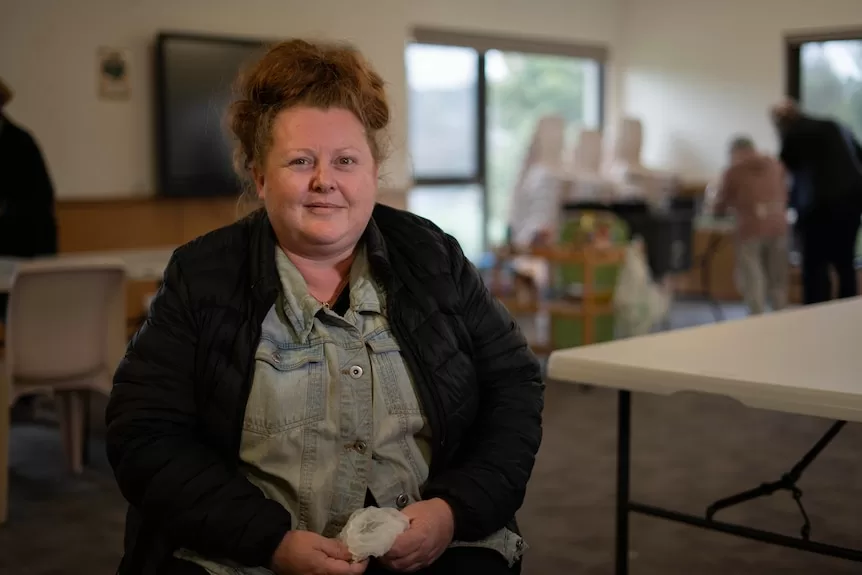- In short: Cooking classes run through neighbourhood houses are helping people learn to prepare healthy and affordable food.
- The rising cost of food has prompted a significant increase in the number of people accessing help at the centres.
- What’s next? Food security experts hope the Federal Budget delivers increased payments for vulnerable households.
Fleur Williams has always lacked confidence in the kitchen but a community cooking class on Hobart’s eastern shore is boosting her skills and self-esteem.
The class — called Gather Cook Grow — aims to teach people to prepare healthy and affordable food.
“I like how we sit and discuss things; different options in pantries, substitutes and stuff like that, because I hadn’t learnt all that type of stuff until I came along here,” she said.
“A lot of things like if you don’t have the protein [such as meat], well you substitute with lentils.”
The class runs out of a neighbourhood house in Warrane, a historically lower socio-economic area in the greater Hobart area.
As food prices have risen over the past two years, the centre has seen a significant increase in the number of people accessing its food donations and support services.
Ms Williams said she had noticed the cost of food had gone up.
“The prices of everything has dramatically gone up, huge price rise,” she said.
It prompted her to do more meal planning and stick to her shopping list, skills she learned through the class.
Using what’s at hand for healthy meals
Danae Giardina, a dietitian who runs the class, says it is about building capacity in participants.
“It could be knowledge and skills; they might have never been taught or shown, or only stick with what they know and feel comfortable or safe doing,” she said.
“Food can be stressful, particularly if it feels unaffordable.”
The groups spend time discussing nutrition and food preparation before picking up the chef’s knives and getting stuck into the cooking.
“We talk about how to make the food go further, how to look at what you already have in your cupboard, your fridge, what your neighbours have, your family, what your community’s neighbourhood house might have, the community garden and tapping into that to create a meal,” she said.
“So, not necessarily following a recipe but looking at what you’ve got and using that.”
The classes also emphasise taste and flavour, using herbs and spices or cooking foods in different ways.
Loading…
More help needed to support vulnerable
While programs such as this are helping Australians to eat more affordably, food security experts say the government needs to do more to ease grocery bill pressures for vulnerable households.
Kathryn Backholer, co-director of the Global Centre for Preventive Health and Nutrition said an affordable daily diet had edged too far away for many Australians.
“In Australia, we sit right near the bottom in terms of the amount that we give for those on JobSeeker or other social security supports and research has shown that people on those low incomes cannot afford a healthy diet,” she said.
Professor Backholer said that was the case before the covid-19 pandemic and subsequent price rises.
Foodbank reported 3.7 million Australian households — or 36 per cent — had experienced moderate to severe food insecurity in 2023, meaning they were “reducing the quality, variety or desirability of their food and at worst, their eating patterns are disrupted”.
An example of food insecurity was forgoing a daily meal in order to afford bills such as heating or rent.
Professor Backholer hopes the Federal Budget, due to be handed down on Tuesday, will include increases to support payments.
“We’d like to see the government increase the rates of payment so that everyone can afford a healthy diet,” she said.
Ms Giardina agreed, saying there was only so much local services could do to help people build capacity.
“We can’t control the system that we’re in and the changing environment of the affordability of food and I find that hard sometimes,” she said.
LoadingLoading…
